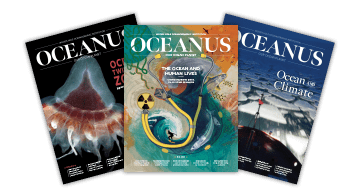
Looking for something specific?
We can help you with that. Check out our extensive conglomeration of ocean information.
Rebuilding Alvin: Chris Lathan
From the beginning of 2011 to May 2013, Alvin, the U.S. science community’s only human-occupied…
Become a member and get Oceanus magazine

Looking for something specific?
We can help you with that. Check out our extensive conglomeration of ocean information.
From the beginning of 2011 to May 2013, Alvin, the U.S. science community’s only human-occupied…